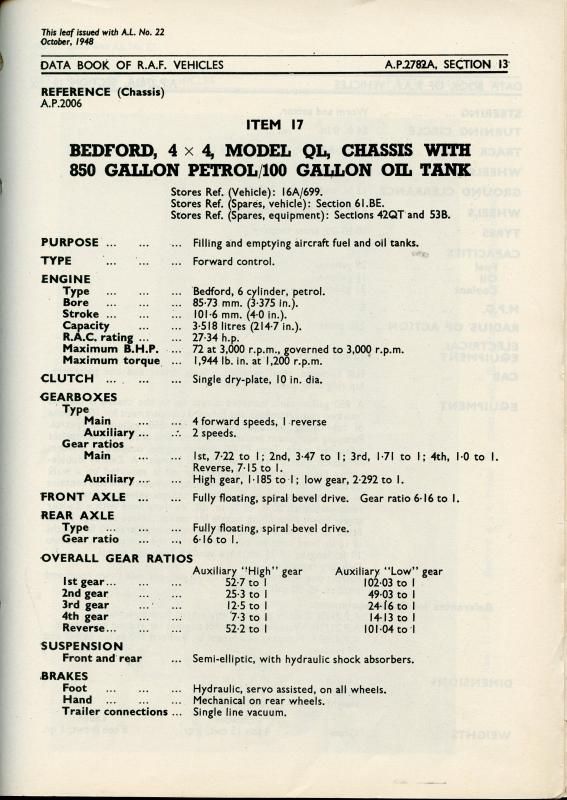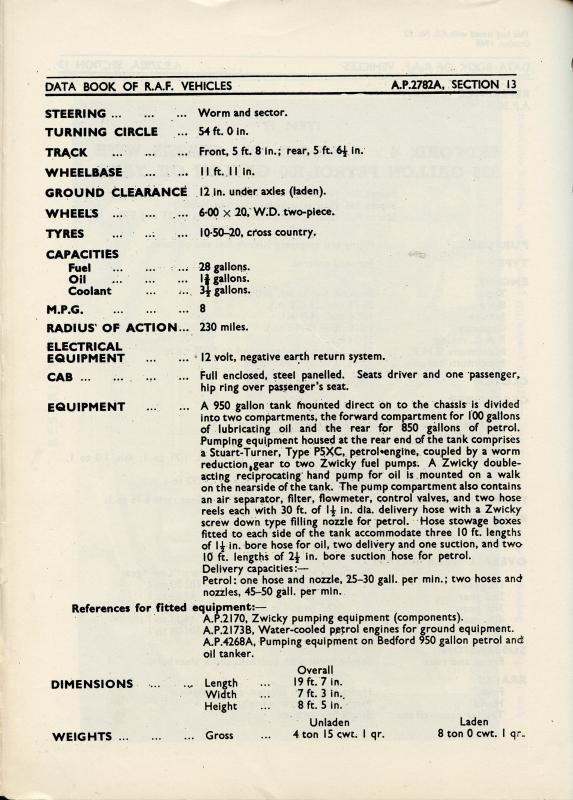-
Posts
490 -
Joined
-
Last visited
-
Days Won
8
Content Type
Profiles
Forums
Gallery
Blogs
Events
Articles
Store
Downloads
Posts posted by RAFMT
-
-
Agree, 7.92x57 Mauser. The numbers, IIRC, were the month and year of manufacture
-
In the RAF it was official policy to put "road" tyres on to front wheels of 4x2 vehicles, unless the vehicle was never intended to run off road, in which case it was standard tyres all round.
-
I would venture so far as to risk sticking my head above the parapet and suggesting perhaps you two are the exception rather than the rule?
I regularly travel with my de-acs (rifles in rifle bags etc. so obvious what they are) often on public transport. Other than the time I was stopped by a quiet young officer of the transport police at London Victoria (who was quite happy to admit he was in unfamiliar territory and merely took a copy of the de-ac cert before sending me on my way) the only police interest I've ever had were those who wanted "to have a play". Firearms officers are the worst for it, i once had to get a team to hurry up and pass the Lee Enfield No.4 around quickly or I'd miss my train. Everyone else I've spoken to has said similar, some of us frequently pass by a regional command centre and none of them gave us a second look.
The trick, i think, is to be so bloody obvious that you couldn't possibly be up to anything!
-
“Generator, engine driven, 12 volt, 750 watt, D.C., Type LX” like it says on the label

They were still in use till at least the early-mid 60's on a number of aircraft types.
-
They were worn over the feet of the waterproof suit, the vents allowed the water to run out and prevent them going (in technical terms) "manky". Never figured out why they thought the laces needed to be protected by the tongue, or even why they needed laces at all.
So now all you need is the suit, the slipway and the flying boat and/or marine craft.
-
Not even the Air Historical Branch claim to have a proper listing of the UINs.
Generally they should correspond to the last unit on the list of movements.
-
16A/1119 is "Chassis, Trailer, Eagle/Brockhouse 6 Ton 4 Wheeled” a Brockhouse design but built by Eagle
The chassis was used for the following trailers:
Bomb Carrying
Flat
Floodlight
Glider Retrieving and Carrying
Landmark Beacon
Parachute Packing
Workshop (GS).
(P.S. I've have, 5 minutes after writing this post, found your email to the RAF Museum in my inbox so cn we consider this my reply?)
-
Yes, or in some APs "QLC Troop Carrier", because god forbid they name things they same way the brown jobs do!
-
The bridge plate question is easy- the Jeep was bridge classification 1 according to the RAF (along with the Brockhouse flat platform 2-wheeled trailer and the Phoenix Engineering Co. 50 Gallon Tar Boiler)
-
Mike,
The roundel on the front wing wasn't introduced officially until 1941, after the fleet was starting to be camouflaged; before then many staff cars had a sign in the window that merely had R.A.F. on. That would be the extent of markings (I'm trying to remember when they stopped painting R.A.F. on the sides of vehicles in white) so I'm afraid the RAF are a bit boring in that respect- so no serial numbers before the war, just the Middlesex registration number.
Bryan
-
Larry, I have copies of the AMOs somewhere giving complete lists of all type numbers i'll dig them out and can send you copies.
I would hasten to point out though there were in a sense two series of type numbers running concurrently. One was the "general" type number which lasted only a short time (introduced for the invasion and discontinued about September if i remember it right) and there was the Signals Type number. The latter designated the body carried - the same equipment would be fitted whether it was on, say, a fordson chassis or austin chassis - and these were used well after the war.
Bryan
EDIT: Oh, and if you haven't already ordered a copy, I wouldn't bother with wheels of the RAF. Too vague and too many generalities and mistakes.
-
 1
1
-
-
Alternatively we have a copy in the RAF Museum Library.
I've had words with our periodical chap for not noticing, and pointing out to me, the photos!!
-
The British Standard for ready mixed paints wasn't introduced until the late 20s so there wasn't a standard off the shelf colour back then.
-
The RAF began camouflaging vehicles on a local basis in 1940 when it became obvious to station commanders that those lovely blue-grey vehicles gave away the airfields they spent so long disguising. They officially fell in line with army practice (although a month or so behind) in 1941.
I would hazard a guess it was a similar situation for the navy
-
The vehicle itself is nothing special, the RAF used lots of them. It's exactly what it seems, a Matador chassis with a flat bed, it could be used to carry outsized load that wouldn't fit in a standard GS body.
-
The Wellington photo (and presumably the others) was taken Italy '45. There's a couple in the same sequence at the RAF Museum.
-
Any stores codes anywhere?
-
Nothing to say the badge is original to the lid, I'd wager it was added during resto simply because the mechanical components are VW.
As for how it got there? probably snapped up cheap from one of the countries trying to get rid of them.
-
Not related to the airfield as far as I can see.
Or rather, it may once have been on one of the domestic sites to south of the airfield and moved after the RAF no longer needed it by a farmer who did.
-
Couldn't spot anything on Google Maps that matched the plan of the airfield, but without a rough location it's a bit hard.
-
Unless the French have genetically modified giant monster trees (look at the leaves on the floor in the second photo) i'm guessing a model.
-
If you can give an indication of where it is in relation, I can try and let you know what it was used for.
-
Nope, it originated from the fact a tender was vehicle that carried supplies, as per the dictionary entry above :-)
-







Sten gun stocks
in Weapons/Accessories
Posted
iirc the rifle butt shaped version was made first, but replaced by the "T" butt which was easier and cheaper to manufacture as it was used a tube and two bits of plate cut to shape.
As for the load out, stens weren't generally carried by the average infantry private, they tended to be issued to the corporal i/c the section who should, according the manual, carry 5 magazines.